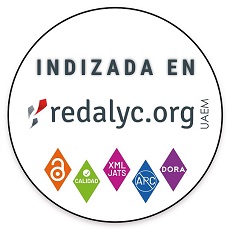Nueva herramienta biotecnológica para el tratamiento de tumores sólidos cancerosos: transformación genética de bacterias anaerobias
New biotechnological tool for the treatment of solid cancerous tumors: genetic transformation of anaerobic bacteria
DOI:
https://doi.org/10.15446/rev.colomb.biote.v26n2.116050Palabras clave:
cáncer, bacterias dirigidas a tumores, terapia oncológica, vector, regiones hipóxicas. (es)anaerobic bacteria, oncology therapy, vector, hypoxic regions (en)
Descargas
El cáncer representa una de las principales causas de mortalidad a nivel mundial debido a su comportamiento y a la carga de resistencia a los tratamientos convencionales; esto, ha impulsado a explorar otras alternativas terapéuticas más específicas y con una toxicidad limitada hacia los tejidos circundantes. La terapia contra el cáncer mediada por bacterias se basa en el tropismo inherente de las bacterias por regiones hipóxicas de los tumores sólidos y su capacidad para ser manipuladas genéticamente como un vector para la terapia farmacológica considerándose como un arma potencial contra esta enfermedad, debido a que reducen la tasa de crecimiento de células aberrantes involucrando las respuestas inmunitarias del huésped y las respuestas moleculares celulares. En esta revisión, se presenta esta terapia novedosa haciendo énfasis en los géneros y especies bacterianas más estudiadas y los diversos mecanismos implicados en el direccionamiento y la supresión tumoral.
Cancer represents one of the leading causes of mortality worldwide due to its behavior and the burden of resistance to conventional treatments. This has driven the exploration of other therapeutic alternatives that are more specific and have limited toxicity to surrounding tissues. Bacteria-mediated cancer therapy is based on the inherent tropism of bacteria for hypoxic regions of solid tumors and their ability to be genetically manipulated as vectors for pharmacological therapy, considered a potential weapon against this disease. This approach reduces the growth rate of aberrant cells by involving the host's immune responses and cellular molecular responses. This review presents this novel therapy, emphasizing the most studied bacterial genera and species, as well as the various mechanisms involved in tumor targeting and suppression.
Referencias
Aldecoa Bedoya, F. Lima, Perú. (2023). Factor inducible por hipoxia en cáncer. Horizonte médico, 23(4), e2584. DOI: https://doi.org/10.24265/horizmed.2023.v23n4.11
Beier, L.-S., Piontek, J., Piontek, A., Protze, J., Kobelt, D., & Walther, W. (2022). Claudin-Targeted Suicide Gene Therapy for Claudin-Overexpressing Tumor Cells by Using Modified Clostridium perfringens Enterotoxin (CPE). En Methods in Molecular Biology (pp. 173–188). Springer US. DOI: 10.1007/978-1-0716-2441-8_9
Chang, W., & Lee, C. (2014). Salmonella as an Innovative Therapeutic Antitumor Agent. International Journal Of Molecular Sciences, 15(8), 14546-14554. DOI: https://doi.org/10.3390/ijms150814546
Clinicaltrials, (2008). Treatment of Patients With Cancer With Genetically Modified Salmonella Typhimurium Bacteria. https://clinicaltrials.gov/study/NCT00004988
Clinicaltrials, (2018). Anti-Tac(Fv)-PE38 (LMB-2) to Treat Cutaneous T-Cell Lymphomas. https://clinicaltrials.gov/study/NCT00080535?tab=table
Clinicaltrials, (2019). Safety Study of Intratumoral Injection of Clostridium Novyi-NT Spores to Treat Patients With Solid Tumors That Have Not Responded to Standard Therapies. https://clinicaltrials.gov/study/NCT01924689?tab=table
Clinicaltrials, (2022). A Phase 1 Study of Mixed Bacteria Vaccine (MBV) in Patients With Tumors Expressing NY-ESO-1 Antigen. https://clinicaltrials.gov/study/NCT00623831?tab=table
Clinicaltrials, (2022). ADXS 11-001 Vaccination Prior to Robotic Surgery, HPV-Positive Oropharyngeal Cancer. https://clinicaltrials.gov/study/NCT02002182
Conlon, K. C., Miljkovic, M. D., & Waldmann, T. A. (2019). Cytokines in the treatment of cancer. Journal of Interferon & Cytokine Research: The Official Journal of the International Society for Interferon and Cytokine Research, 39(1), 6–21. DOI: https://doi.org/10.1089/jir.2018.0019
Coutermarsh-Ott, S. L., Broadway, K. M., Scharf, B. E., & Allen, I. C. (2017). Effect of Salmonella enterica serovar Typhimurium VNP20009 and VNP20009 with restored chemotaxis on 4T1 mouse mammary carcinoma progression. Oncotarget, 8(20), 33601–33613. DOI: https://doi.org/10.18632/oncotarget.16830
de Vaca, R. P.-C., Cárdenas-Cárdenas, E., Mondragón-Terán, P., & Solís, y. A. A. (s/f). Biología molecular del cáncer y las nuevas herramientas en oncología. Medigraphic.com. Recuperado el 21 de mayo de 2024, de https://www.medigraphic.com/pdfs/quirurgicas/rmq-2017/rmq174d.pdf
Dhankhar, R., Kawatra, A., Mohanty, A., & Gulati, P. (2021). Microbial enzymes used in prodrug activation for cancer therapy: Insights and future perspectives. Current Protein & Peptide Science, 22(7), 514–525. DOI: https://doi.org/10.2174/1389203721666201207231932
Duong, M. T.-Q., Qin, Y., You, S.-H., & Min, J.-J. (2019). Bacteria-cancer interactions: bacteria-based cancer therapy. Experimental & Molecular Medicine, 51(12), 1–15. DOI: https://doi.org/10.1038/s12276-019-0297-0
Farfán R. (2017). Ensayos clínicos con medicamentos biológicos. F. Gonzales-Andrade (Ed). Medicamentos biológicos: presente y futuro de la terapéutica. (pág 99-111). Universidad Central del Ecuador.
Felgner, S., Kocijancic, D., Frahm, M., & Weiss, S. (2016). Bacteria in cancer therapy: Renaissance of an old concept. International Journal of Microbiology, 2016, 1–14. DOI: https://doi.org/10.1155/2016/8451728
Felgner, S., Pawar, V., Kocijancic, D., Erhardt, M., & Weiss, S. (2017). Tumour‐targeting bacteria‐based cancer therapies for increased specificity and improved outcome. Microbial Biotechnology, 10(5), 1074–1078. DOI: https://doi.org/10.1111/1751-7915.12787
Gracia-Cazaña, T., Salazar, N., Zamarrón, A., Mascaraque, M., Lucena, S. R., & Juarranz, Á. (2016). Resistencias al tratamiento no quirúrgico en cáncer cutáneo no melanoma. Parte II: terapia fotodinámica, vismodegib, cetuximab, metotrexato intralesional y radioterapia. Actas dermo-sifiliograficas, 107(9), 740–750. DOI: https://doi.org/10.1016/j.ad.2016.04.020
Gupta, K. H., Nowicki, C., Giurini, E. F., Marzo, A. L., & Zloza, A. (2021). Bacterial-Based Cancer Therapy (BBCT): Recent Advances, Current Challenges, and Future Prospects for Cancer Immunotherapy. Vaccines, 9(12), 1497. DOI: https://doi.org/10.3390/vaccines9121497
Ho, C. L., Tan, H. Q., Chua, K. J., Kang, A., Lim, K. H., Ling, K. L., Yew, W. S., Lee, Y. S., Thiery, J. P., & Chang, M. W. (2018). Engineered commensal microbes for diet-mediated colorectal-cancer chemoprevention. Nature Biomedical Engineering, 2(1), 27–37. DOI: https://doi.org/10.1038/s41551-017-0181-y
Hu, W., Wang, G., Huang, D., Sui, M., & Xu, Y. (2019). Cancer immunotherapy based on natural killer cells: Current progress and new opportunities. Frontiers in Immunology, 10. DOI: https://doi.org/10.3389/fimmu.2019.01205
Janku, F., Zhang, H. H., Pezeshki, A., Goel, S., Murthy, R., Wang-Gillam, A., Shepard, D. R., Helgason, T., Masters, T., Hong, D. S., Piha-Paul, S. A., Karp, D. D., Klang, M., Huang, S. Y., Sakamuri, D., Raina, A., Torrisi, J., Solomon, S. B., Weissfeld, A., . . . Gounder, M. M. (2021). Intratumoral Injection of Clostridium novyi-NT Spores in Patients with Treatment-refractory Advanced Solid Tumors. Clinical Cancer Research, 27(1), 96-106. DOI: https://doi.org/10.1158/1078-0432.ccr-20-2065
Karbach, J., Neumann, A., Brand, K., Wahle, C., Siegel, E., Maeurer, M., Ritter, E., Tsuji, T., Gnjatic, S., Old, L. J., Ritter, G., & Jäger, E. (2012). Phase I Clinical Trial of Mixed Bacterial Vaccine (Coley’s Toxins) in Patients with NY-ESO-1 Expressing Cancers: Immunological Effects and Clinical Activity. Clinical Cancer Research, 18(19), 5449-5459. DOI: https://doi.org/10.1158/1078-0432.ccr-12-1116
Karjoo, Z., Chen, X., & Hatefi, A. (2016). Progress and problems with the use of suicide genes for targeted cancer therapy. Advanced Drug Delivery Reviews, 99, 113–128. DOI: https://doi.org/10.1016/j.addr.2015.05.009
Kubiak, A. M., & Minton, N. P. (2015). The potential of clostridial spores as therapeutic delivery vehicles in tumour therapy. Research in Microbiology, 166(4), 244–254. DOI: https://doi.org/10.1016/j.resmic.2014.12.006
Lee, C.-H., Lin, S.-T., Liu, J.-J., Chang, W.-W., Hsieh, J.-L., & Wang, W.-K. (2014). Salmonella induce autophagy in melanoma by the downregulation of AKT/mTOR pathway. Gene Therapy, 21(3), 309–316. DOI: https://doi.org/10.1038/gt.2013.86
León J, Pareja A. Lima, Perú (2018). Inmunología del cáncer I: bases moleculares y celulares de la respuesta inmune antitumoral. Horizonte médico, 18(3): 80-89. DOI: http://dx.doi.org/10.24265/horizmed.2018.v18n3.11
León, J., Pareja, A. Lima, Perú. (2019). Inmunología del cáncer II: bases moleculares y celulares de la carcinogénesis. Horizonte médico, 19(2), 84–92. DOI: https://doi.org/10.24265/horizmed.2019.v19n2.11
López, M. M., & Cardona, A. F. (2021). Historia del cáncer y el cáncer en la historia. Medicina, 42(4), 528–562. DOI: https://doi.org/10.56050/01205498.1559
Lozano Martin, M. (2019). El efecto warburg y los cambios metabólicos asociados al cáncer:Revisión por dicloroacetato en células de cáncer de colon. Universidad de Valladolid, pág 6. URL: https://uvadoc.uva.es/bitstream/handle/10324/24974/TFG-M-N1000.pdf?sequence=1
Mayorga D, Ramirez M, Aristizábal FA. (2020). Señuelo dirigido a HIF-1 potencializa efectos citotóxicos de dos agentes quimioterapéuticos en MDA-MB-231. Revista Colombiana de Biotecnología, 22(2). https://doi.org/10.15446/rev.colomb.biote.v22n2.73114
ND, Villarreal JJ. México (2018). Criterios de Evaluación en Tumores Sólidos 1.1 (RECIST 1.1) en pacientes con Cáncer Primario y/o Metastásico o Enfermedad Metastásica Recurrente. Scientifica, 16(1), 8-12. URL: https://www.researchgate.net/publication/332382922_Criterios_de_Evaluacion_en_Tumores_Solidos_11_RECIST_11_en_pacientes_con_Cancer_Primario_yo_Metastasico_o_Enfermedad_Metastasica_Recurrente
Nguyen, V. H., & Min, J.-J. (2017). Salmonella-mediated cancer therapy: Roles and potential. Nuclear Medicine and Molecular Imaging, 51(2), 118–126. DOI: https://doi.org/10.1007/s13139-016-0415-z
Olivo Yepez, A., Linares Márquez, P., Delgado Encisio, I., & Morales Romero, Z. (2021). terapia génica en México y España, una aproximación bioética desde la investigación científica. Revista de bioetica y derecho, 117–138. DOI: https://doi.org/10.1344/rbd2021.53.34049
Orange, M., Reuter, U., & Hobohm, U. (2016). Coley’s lessons remembered: Augmenting mistletoe therapy. Integrative Cancer Therapies, 15(4), 502–511. DOI: https://doi.org/10.1177/1534735416649916
Organización Mundial de la Salud, (2024). Cáncer. https://www.who.int/es/health-topics/cancer#tab=tab_1
Pahle, J., Menzel, L., Niesler, N., Kobelt, D., Aumann, J., Rivera, M., & Walther, W. (2017). Rapid eradication of colon carcinoma by Clostridium perfringens Enterotoxin suicidal gene therapy. BMC Cancer, 17(1). DOI: https://doi.org/10.1186/s12885-017-3123-x
Preitakaitė, V., Barasa, P., Aučynaitė, A., Plakys, G., Koplūnaitė, M., Zubavičiūtė, S., & Meškys, R. (2023). Bacterial amidohydrolases and modified 5-fluorocytidine compounds: Novel enzyme-prodrug pairs. PloS One, 18(11). DOI: https://doi.org/10.1371/journal.pone.0294696
Reyes, S. J., González, K. B., Rodríguez, C., Navarrete-Muñoz, C., Salazar, A. P., Villagra, A., Caglevic, C., & Hepp, M. I. (2020). Actualización general de inmunoterapia en cáncer. Revista Medica de Chile, 148(7), 970–982. DOI: https://doi.org/10.4067/s0034-98872020000700970
Sampieri, R., & Calderón, E. (2023). Transducción de señales: de lo molecular a lo funcional. Zenodo. DOI: https://doi.org/10.5281/ZENODO.8381548
Sarotra, P., & Medhi, B. (2016). Use of bacteria in cancer therapy. En Recent Results in Cancer Research (Vol. 209, pp. 111–121). Springer International Publishing. DOI: https://doi.org/10.1007/978-3-319-42934-2_8
Siddiqui, N. S., Godara, A., Byrne, M. M., & Saif, M. W. (2019). Capecitabine for the treatment of pancreatic cancer. Expert Opinion on Pharmacotherapy, 20(4), 399–409. DOI: https://doi.org/10.1080/14656566.2018.1560422
Sieow, B. F.-L., Wun, K. S., Yong, W. P., Hwang, I. Y., & Chang, M. W. (2020). Tweak to treat: Reprograming bacteria for cancer treatment. Trends in Cancer, 7(5), 447–464. DOI: https://doi.org/10.1016/j.trecan.2020.11.004
Song, S., Vuai, M. S., & Zhong, M. (2018). The role of bacteria in cancer therapy – enemies in the past, but allies at present. Infectious Agents and Cancer, 13(1). DOI: https://doi.org/10.1186/s13027-018-0180-y
Trivanović, D., Pavelić, K., & Peršurić, Ž. (2021). Fighting cancer with bacteria and their toxins. International Journal of Molecular Sciences, 22(23), 12980. DOI: https://doi.org/10.3390/ijms222312980
Villarreal JJ, Flores López A, Morán Martínez J, Arroyo SM, Betancourt Martínez
Weerakkody, L. R., & Witharana, C. (2019). The role of bacterial toxins and spores in cancer therapy. Life Sciences, 235(116839), 116839. DOI: https://doi.org/10.1016/j.lfs.2019.116839
Wei, X., Du, M., Chen, Z., & Yuan, Z. (2022). Recent advances in bacteria-based cancer treatment. Cancers, 14(19), 4945. DOI: https://doi.org/10.3390/cancers14194945
Wong, K. K., Li, W. A., Mooney, D. J., & Dranoff, G. (2016). Advances in Therapeutic Cancer Vaccines. En Advances in Immunology (pp. 191–249). Elsevier. DOI: http://dx.doi.org/10.1016/bs.ai.2015.12.001
Yaghoubi, N., Soltani, A., Ghazvini, K., Hassanian, S. M., & Hashemy, S. I. (2019). PD-1/ PD-L1 blockade as a novel treatment for colorectal cancer. Biomedecine & Pharmacotherapie [Biomedicine & Pharmacotherapy], 110, 312–318. DOI: https://doi.org/10.1016/j.biopha.2018.11.105
Zhou, HM., Zhang, JG., Zhang, X. et al.(2021). Targeting cancer stem cells for reversing therapy resistance: mechanism, signaling, and prospective agents. Sig Transduct Target Ther 6, 62. DOI: https://doi.org/10.1038/s41392-020-00430-1
Zurita-Cruz, J. N., Barbosa-Cortés, L., & Villasís-Keever, M. Á. (2019). De la investigación a la práctica: fases clínicas para el desarrollo de fármacos. Revista Alergia México, 66(2), 246–253. DOI: https://doi.org/10.29262/ram.v66i2.625
Cómo citar
APA
ACM
ACS
ABNT
Chicago
Harvard
IEEE
MLA
Turabian
Vancouver
Descargar cita
Licencia

Esta obra está bajo una licencia internacional Creative Commons Atribución 4.0.
Esta es una revista de acceso abierto distribuida bajo los términos de la Licencia Creative Commons Atribución 4.0 Internacional (CC BY). Se permite el uso, distribución o reproducción en otros medios, siempre que se citen el autor(es) original y la revista, de conformidad con la práctica académica aceptada. El uso, distribución o reproducción está permitido desde que cumpla con estos términos.
Todo artículo sometido a la Revista debe estar acompañado de la carta de originalidad. DESCARGAR AQUI (español) (inglés).



















